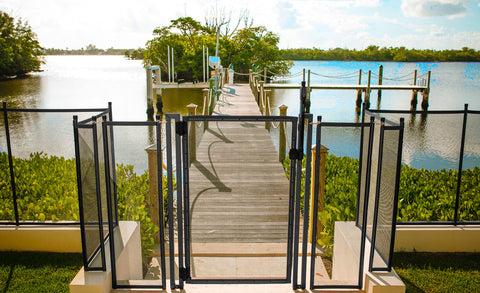New Drowning Report Shows Increase in Child Fatalities

As families flock to the water, a new drowning report from the U.S. Consumer Product Safety Commission (CPSC) delivers a few critical reminders about basic safety. The latest CPSC report shows an alarming increase in child fatalities. According to the new drowning report, this was especially evident in the case of young children. This should serve as an important wake-up call for parents and caregivers everywhere. It is crucial to take proactive measures to prevent horrible situations like these.

Some Key Findings from the New Drowning Report
The annual drowning and submersion report by the CPSC highlights some distressing statistics:
- Between 2018 and 2020, an average of 371 pool–or spa–related fatal drownings were reported annually for children under 15.
- In 2020 alone, there were 340 fatal drownings. This represented a slight decrease from 367 in 2019.
- That said, children under 5, fatal drownings increased by 10% in 2020, with 279 fatalities compared to 254 in 2019.
- Non-fatal drowning injuries remain high, with 6,400 incidents estimated in 2022.
As we often note, the Centers for Disease Control and Prevention (CDC) reports drowning as the most common form of death for kids under four. This new drowning report from the CPSC goes one year higher.
As it turns out, most drowning incidents occur in residential settings. This can include the child's home or a family or friend's pool area. Sadly, 75% of these fatalities involve children under five years of age. These numbers underline the importance of constant supervision and implementing multiple layers of protection around water.

The Role that Active Supervision Plays
One of the critical takeaways from the new drowning report from the CPSC is the need for vigilant active supervision. As Alex Hoehn-Saric, chair of the CPSC, emphasized, "Having somebody designated as a water watcher is really important."
This designated person should focus solely on watching the children in the water, avoiding distractions like phones, conversations or books. For more information about this, be sure to read our full post about active supervision.
Putting Up a Pool Fence
In addition to active supervision, installing a pool fence is a crucial step. Pool fences, safety covers, and alarms are all proper layers of safety for your pool and spa areas. These help to significantly reduce the risk of accidental drownings. Many drowning incidents happen during "non-swim times." When no one is watching, kids often wander into danger and fall into the water. Thus, having barriers and alarms can help to save lives.

Racial Disparities in Drowning Incidents
Beyond general danger, the new drowning report from the CPSC also highlights some significant racial disparities in fatalities. For one, African American children represent a disproportionately high percentage of these deaths. For children aged five to 14, 45% of the reported drowning deaths were African Americans. Keeping this statistic in mind, there is a pressing need for more targeted water safety education in historically excluded communities.
Stay Alert When it Comes to Pool Safety
To wrap up this week’s blog, water safety is every person’s problem. No matter who you are, it is important to remember basic drowning prevention tips. The CPSC’s new drowning report serves as a critical reminder of the dangers that water can pose, especially to young children.

Remember, staying informed and proactive is key to keeping our children safe around water. For more information and resources on water safety, visit Pool Safely, a national public education campaign aimed at reducing child drownings and entrapment incidents. Additionally, share this safety blog with your family and friends. Knowledge is contagious and can help to save lives.




